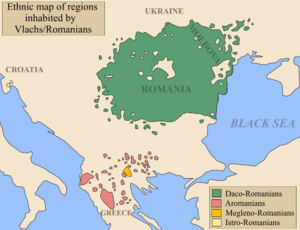586
This article is about the year 586. For other uses, see 586 (disambiguation).
| Millennium: | 1st millennium |
|---|---|
| Centuries: | 5th century · 6th century · 7th century |
| Decades: | 550s · 560s · 570s · 580s · 590s · 600s · 610s |
| Years: | 583 · 584 · 585 · 586 · 587 · 588 · 589 |
| 586 by topic | |
| Politics | |
| State leaders – Sovereign states | |
| Birth and death categories | |
| Births – Deaths | |
| Establishment and disestablishment categories | |
| Establishments – Disestablishments | |
| Gregorian calendar | 586 DLXXXVI |
| Ab urbe condita | 1339 |
| Armenian calendar | 35 ԹՎ ԼԵ |
| Assyrian calendar | 5336 |
| Bengali calendar | −7 |
| Berber calendar | 1536 |
| Buddhist calendar | 1130 |
| Burmese calendar | −52 |
| Byzantine calendar | 6094–6095 |
| Chinese calendar | 乙巳年 (Wood Snake) 3282 or 3222 — to — 丙午年 (Fire Horse) 3283 or 3223 |
| Coptic calendar | 302–303 |
| Discordian calendar | 1752 |
| Ethiopian calendar | 578–579 |
| Hebrew calendar | 4346–4347 |
| Hindu calendars | |
| - Vikram Samvat | 642–643 |
| - Shaka Samvat | 507–508 |
| - Kali Yuga | 3686–3687 |
| Holocene calendar | 10586 |
| Iranian calendar | 36 BP – 35 BP |
| Islamic calendar | 37 BH – 36 BH |
| Javanese calendar | 475–476 |
| Julian calendar | 586 DLXXXVI |
| Korean calendar | 2919 |
| Minguo calendar | 1326 before ROC 民前1326年 |
| Nanakshahi calendar | −882 |
| Seleucid era | 897/898 AG |
| Thai solar calendar | 1128–1129 |
| Wikimedia Commons has media related to 586. |
Year 586 (DLXXXVI) was a common year starting on Tuesday (link will display the full calendar) of the Julian calendar. The denomination 586 for this year has been used since the early medieval period, when the Anno Domini calendar era became the prevalent method in Europe for naming years.
Events
By place
Byzantine Empire
- Spring – Emperor Maurice rejects a peace proposal of the Persians, in exchange for renewed payments in gold.[1]
- Battle of Solachon: A Byzantine army under command of Philippicus defeats the Sassanid Persians, near Dara.
- The Avars besiege Thessalonica (Central Macedonia), the second city of the Byzantine Empire.[2]
- The Vlachs are first mentioned in a Byzantine chronicle (approximate date).
Europe
- April 21 – King Liuvigild dies at Toledo after an 18-year reign, and is succeeded by his second son Reccared I.
- April/May: Reccared I becomes King of the West Goths following the death of his father, Liuvigild.
- Slavs advance to the gates of Thessaloniki and the Peloponnese.
- Avars destroy a lien of Roman camps along the Danubian Limes, including Oescus and Ratiaria.
By topic
Art
- The Page with the Crucifixion, from the "Rabbula Gospels", at the Monastery of St. John in Beth Zagba (Syria), is completed. It is now kept at the Biblioteca Medicea Laurenziana, Florence, Italy.
Religion
- Japanese Buddhism comes under attack as a "foreign" religion.
- Saint Comgall founds an abbey in Bangor, Northern Ireland.
- King Custennin of Dumnonia is converted to Christianity.
Births
- Theudebert II, king of Austrasia (d. 612)
- Yang Hao, prince of the Sui Dynasty (approximate date)
Deaths
- April 21 – Liuvigild, king of the Visigoths
- Hermenegild, Visigothic prince (or 585)
- Prætextatus, bishop of Rouen (or 589)
- August 13 – Radegund, Frankish princess
- Rhun Hir ap Maelgwn, king of Gwynedd
- Zhu Manyue, empress of Northern Zhou (b. 547)
References
- ↑ Greatrex, Lieu & 2002 p. 168; Whitby & 1986 p. 41–43
- ↑ History of the Byzantine Empire from DCCXVI to MLVII, George Finlay, p. 316
This article is issued from Wikipedia - version of the 10/23/2016. The text is available under the Creative Commons Attribution/Share Alike but additional terms may apply for the media files.
